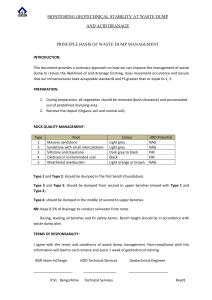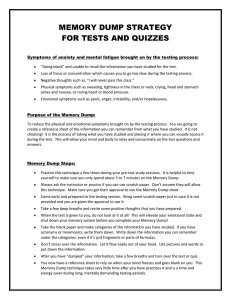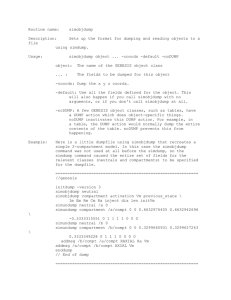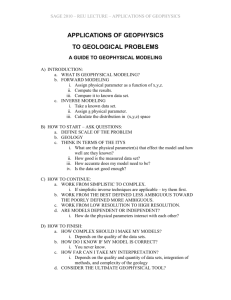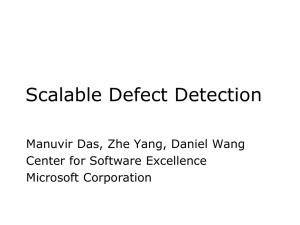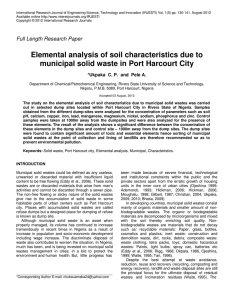MARINE DUMP SITE RESEARCH - THE NEED FOR MULTIDISCIPLINARY APPROACH
advertisement
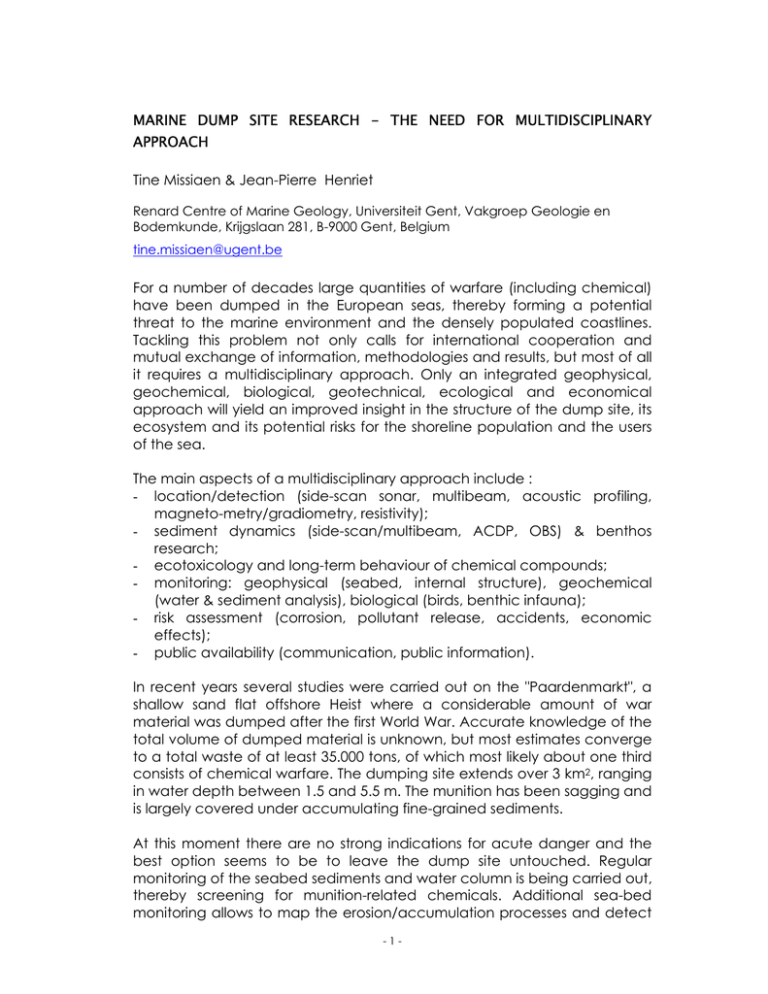
MARINE DUMP SITE RESEARCH - THE NEED FOR MULTIDISCIPLINARY APPROACH Tine Missiaen & Jean-Pierre Henriet Renard Centre of Marine Geology, Universiteit Gent, Vakgroep Geologie en Bodemkunde, Krijgslaan 281, B-9000 Gent, Belgium tine.missiaen@ugent.be For a number of decades large quantities of warfare (including chemical) have been dumped in the European seas, thereby forming a potential threat to the marine environment and the densely populated coastlines. Tackling this problem not only calls for international cooperation and mutual exchange of information, methodologies and results, but most of all it requires a multidisciplinary approach. Only an integrated geophysical, geochemical, biological, geotechnical, ecological and economical approach will yield an improved insight in the structure of the dump site, its ecosystem and its potential risks for the shoreline population and the users of the sea. The main aspects of a multidisciplinary approach include : - location/detection (side-scan sonar, multibeam, acoustic profiling, magneto-metry/gradiometry, resistivity); - sediment dynamics (side-scan/multibeam, ACDP, OBS) & benthos research; - ecotoxicology and long-term behaviour of chemical compounds; - monitoring: geophysical (seabed, internal structure), geochemical (water & sediment analysis), biological (birds, benthic infauna); - risk assessment (corrosion, pollutant release, accidents, economic effects); - public availability (communication, public information). In recent years several studies were carried out on the "Paardenmarkt", a shallow sand flat offshore Heist where a considerable amount of war material was dumped after the first World War. Accurate knowledge of the total volume of dumped material is unknown, but most estimates converge to a total waste of at least 35.000 tons, of which most likely about one third consists of chemical warfare. The dumping site extends over 3 km2, ranging in water depth between 1.5 and 5.5 m. The munition has been sagging and is largely covered under accumulating fine-grained sediments. At this moment there are no strong indications for acute danger and the best option seems to be to leave the dump site untouched. Regular monitoring of the seabed sediments and water column is being carried out, thereby screening for munition-related chemicals. Additional sea-bed monitoring allows to map the erosion/accumulation processes and detect -1- possible objects on the sea floor. Ongoing research focuses on the diffusion of chemical compounds and integrated 3D geophysical modeling of the dump site. -2-
